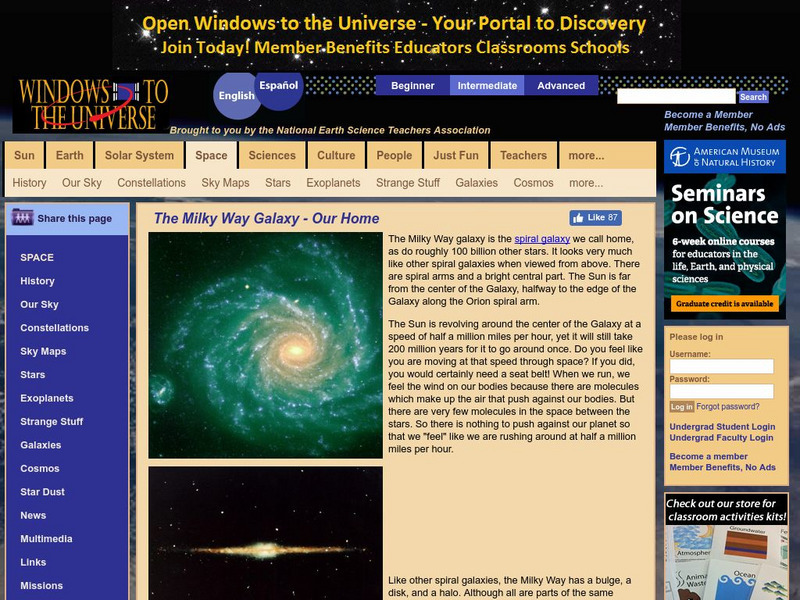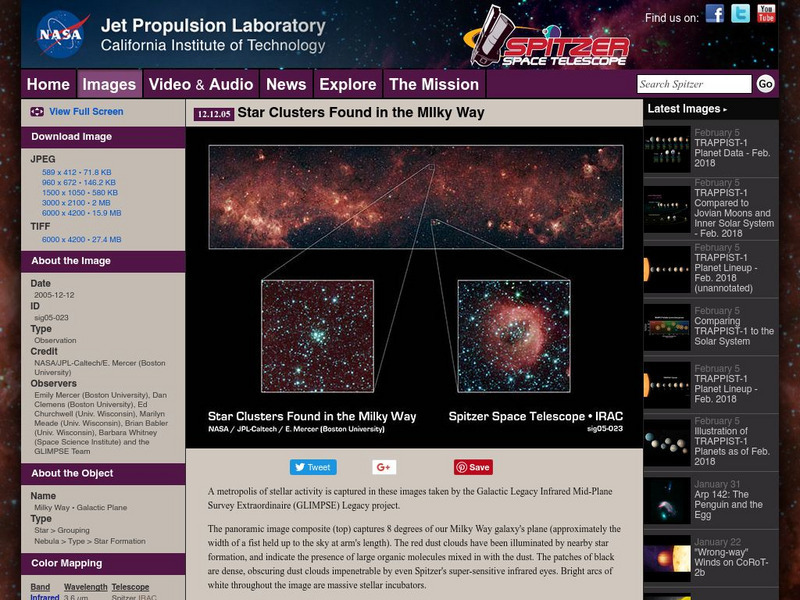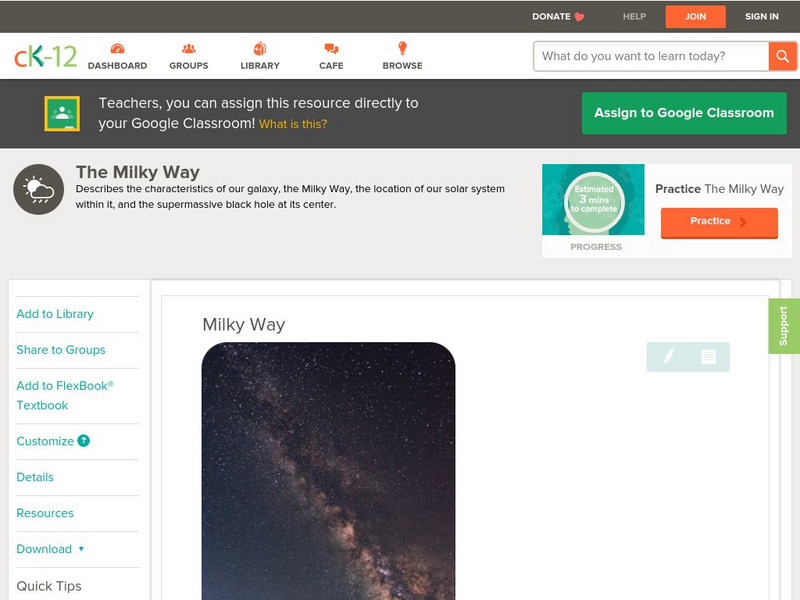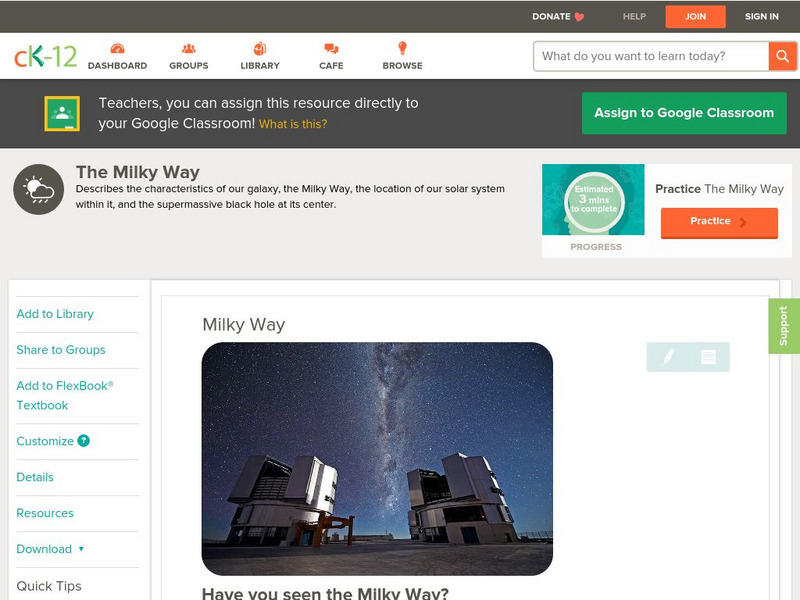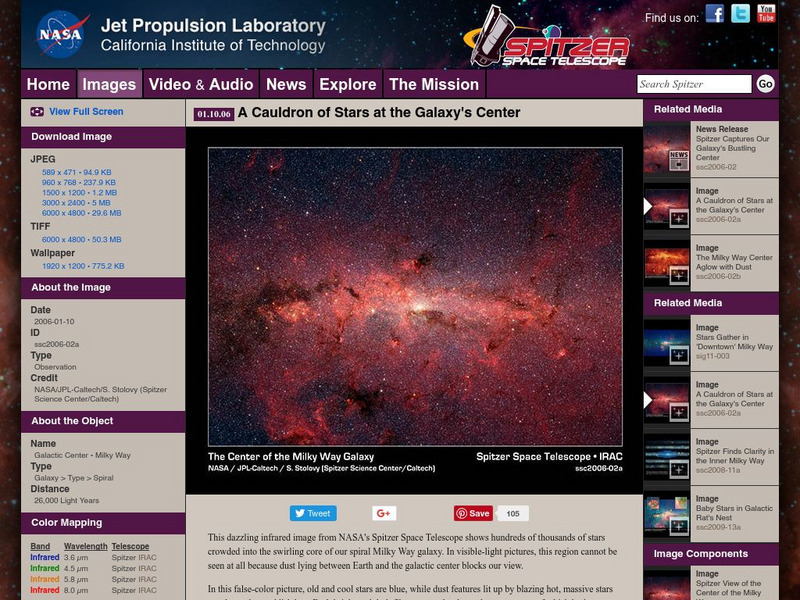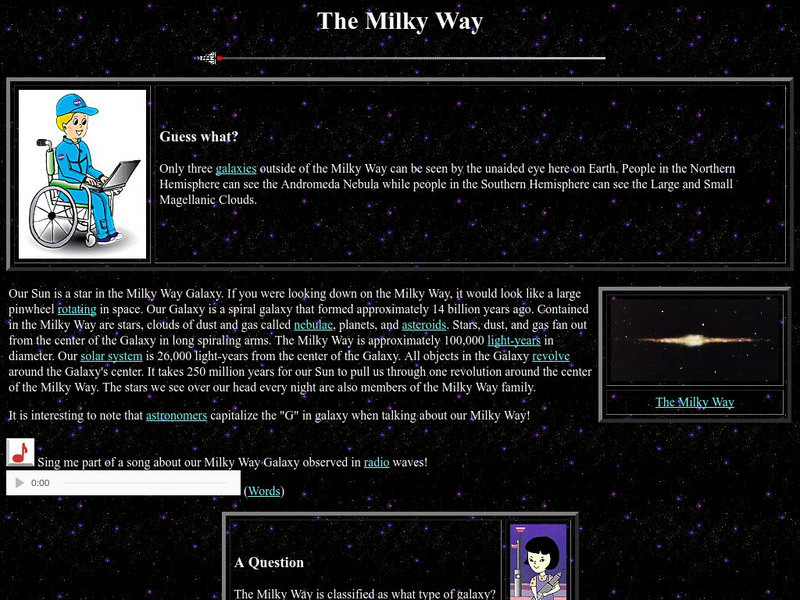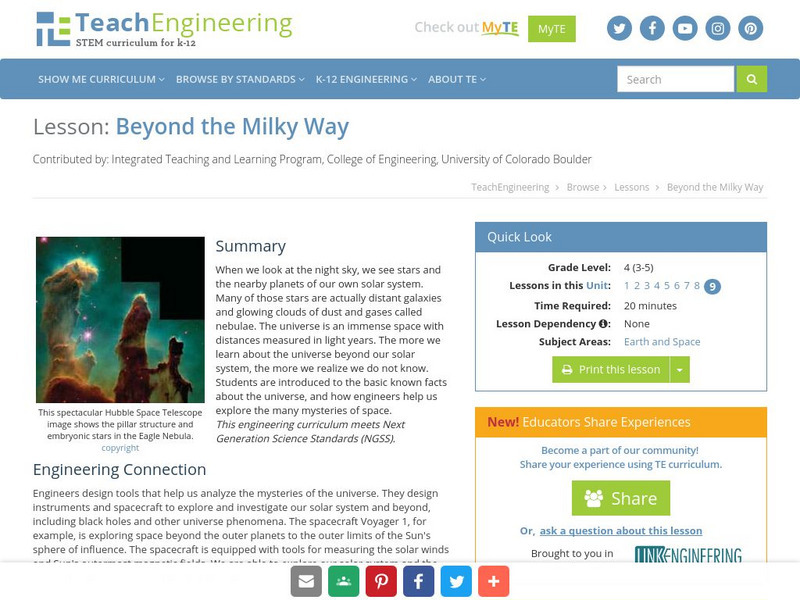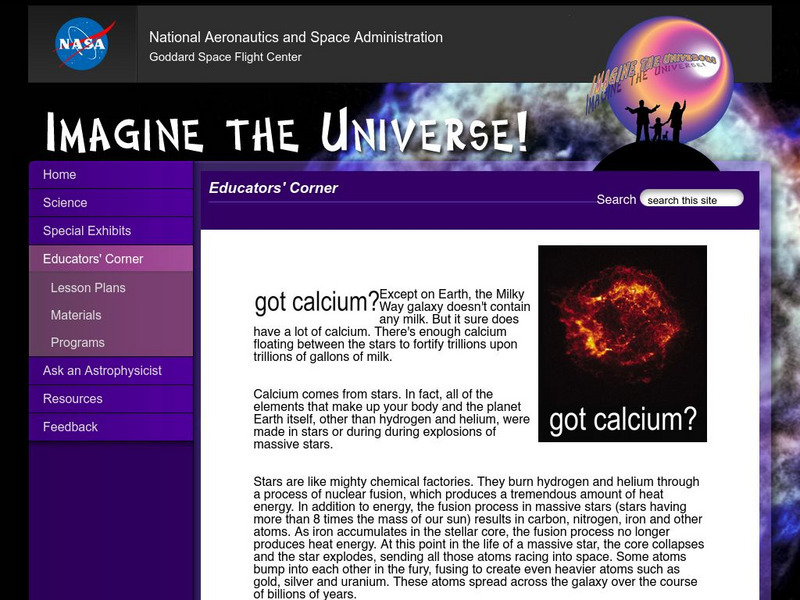Hi, what do you want to do?
University of Arizona
The Milky Way Train: Celebrating Kenji Miyazawa
This site presents a synopsis of Kenji Miyazawa's novel, "The Milky Way Train," focusing on the author's interest in astronomy and how he weaves that into his story.
University of Texas at Austin
The University of Texas Mc Donald Observatory: The Milky Way
Students will work in groups to make up a story and picture that explains how someone living thousands of years ago in their location might have explained the Milky Way.
Science Buddies
Science Buddies: The Milky Way and Beyond: Globular Clusters
Globular clusters, compact groups of about a million stars that move around together in galaxies, are among the oldest objects found in the universe. Since they are found most galaxies and since they've been around for so long, globular...
National Earth Science Teachers Association
Windows to the Universe the Milky Way Galaxy
Learn what Milky Way galaxy is made of and what it looks like, as well as how it relates to other known galaxies. Read "Questions and answers about the Milky Way" for further information.
California Institute of Technology
Spitzer Science Center: Star Clusters in the Milky Way
Under the heading, "Star Clusters Found in the Milky Way" this site examines specific details of an image displaying various clusters of stars in the Milky Way. The text below the image highlights in detail various features of the picture.
CK-12 Foundation
Ck 12: Earth Science: Milky Way
[Free Registration/Login may be required to access all resource tools.] Identify the shape and size of the Milky Way and where our solar system is located in the Milky Way.
CK-12 Foundation
Ck 12: Earth Science: Milky Way
[Free Registration/Login may be required to access all resource tools.] Identify the shape and size of the Milky Way and where our solar system is located in the Milky Way.
American Museum of Natural History
American Museum of Natural History: Ology: Milky Way Galaxy
How big is a billion? Find out some interesting facts about our galaxy, the Milky Way, and its billion stars.
California Institute of Technology
Spitzer Science Center: Center of the Milky Way
This space telescope image displays the center of the Milky Way Galaxy and its "A Cauldron of Stars." In addition, a detailed textual overview explains various specifics of the picture.
NASA
Nasa: Milky Way
This Milky Way image is part of a series of photographs taken from the Spitzer Space Telescope. The picture is accompanied by a textual overview of the Milky Way with specific attention given to the details of the picture. Several higher...
Cosmos 4 kids
Cosmos4 Kids: Galaxies: Milky Way
Learn the basic facts about the Milky Way. Brief, to the point text make this site most suitable for younger students.
National Science Foundation
National Science Foundation: Star Makes Closest Approach to Black Hole in Milky Way
A star known as S0-2 made its closest approach to the supermassive black hole at the center of the Milky Way in 2018.
California Institute of Technology
Spitzer Science Center: Milky Way Aglow With Dust
This space telescope image titled "The Milky Way Center Aglow with Dust" features five separate images of the galaxy's center through infrared eyes. In addition, a detailed textual overview explains various specifics of the picture.
NASA
Nasa Star Child: The Milky Way
The information, geared mainly for younger viewers, provides simple and basic information about the Milky Way, and includes several embedded links to related information.
ClassFlow
Class Flow: The Milky Way
[Free Registration/Login Required] This flipchart provides information about the Milky Way Galaxy and Charles Messier's famous nebulae catalog.
TeachEngineering
Teach Engineering: Beyond the Milky Way
When we look at the night sky, we see stars and the nearby planets of our own solar system. Many of those stars are actually distant galaxies and glowing clouds of dust and gases called nebulae. The universe is an immense space with...
Mr. Nussbaum
Mr. Nussbaum: Galaxies Reading Comprehension
This learning module includes a nonfiction reading passage about galaxies including the Milky Way followed by a multiple choice self-assessment which gives students immediate feedback.
CK-12 Foundation
Ck 12: Earth Science: Milky Way Study Guide
[Free Registration/Login may be required to access all resource tools.] This study guide summarizes key points about the Milky Way. Includes a few questions to check for understanding.
Australian Broadcasting Corporation
Australian Broadcasting Corporation: News in Science: Milky Way Has an Extra Sweeping Arm
From ABC News in Science, this article discusses the shape of the Milky Way Galaxy and the presence of an additional arm attached to the galaxy.
PBS
Pbs: Nova: Hunting the Edge of Space
Hour One of Hunting the Edge of Space, "The Mystery of the Milky Way," includes information on the Milky Way and chronicles the history of telescopes from Galileo's time to today's planet-searching telescopes. Hour Two, "The...
PBS
Pbs Teachers:monster of the Milky Way: Birth of a Black Hole
Discover how a dying star can be reborn as a black hole. View a slide show that follows the progression of events from an old, dying star to newborn black hole.
Science Buddies
Science Buddies: The Moon and the Stars
When you are in the city, only a few of the brightest stars are visible. But when you are in the country, you can see many more stars than you can count. Sometimes you can even see the bright belt of our galaxy, the Milky Way. In this...
Space Telescope Science Institute
Hubble Site: Way Out!
Can you help a cow plot a path out of the Milky Way? This hilarious space game is for all ages and is offered by HubbleSite. Users may pick their level of expertise and can choose from novice, pretty smart about space, or an astrobrainiac.
NASA
Nasa: Imagine the Universe: Got Calcium?
This site has an article on, "The Milky Way galaxy doesn't contain any milk, but it sure does have a lot of calcium. There's enough calcium floating between the stars to fortify trillions about trillions of stars."








